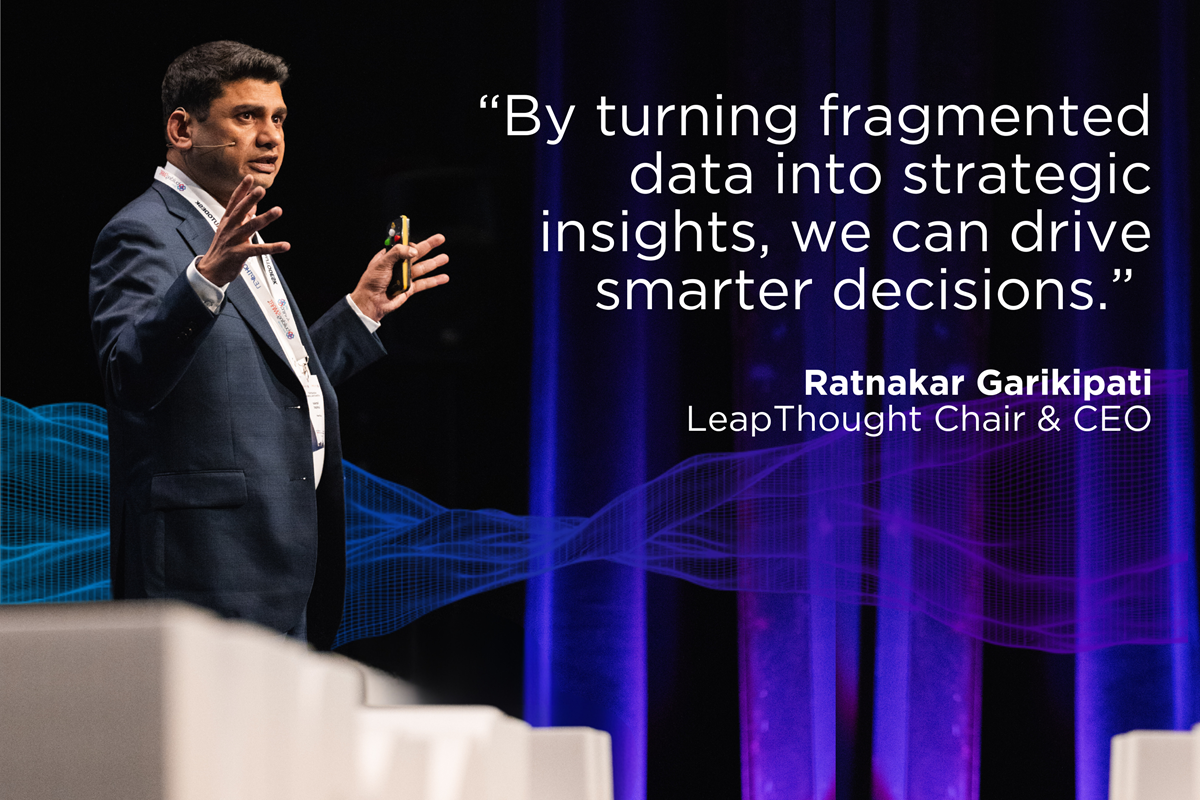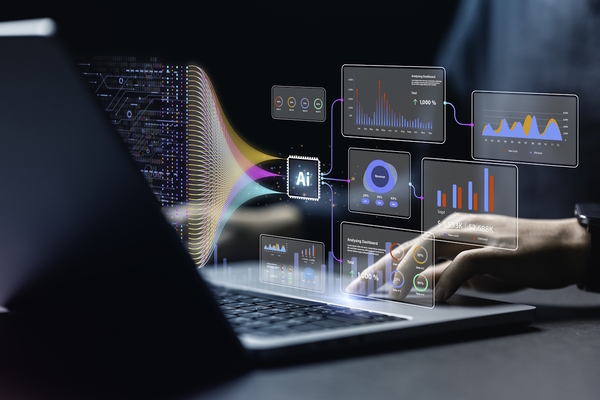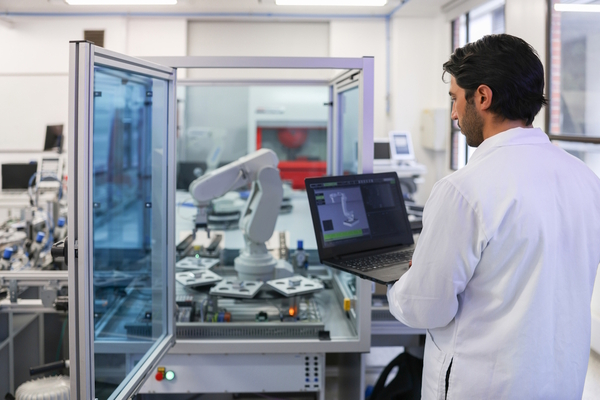Frontier data and AI: Reshaping the global construction industry
LeapThought is leveraging frontier data and AI to transform construction, redefining the future of intelligent, sustainable project delivery worldwide

For an industry that literally lays the foundations of our physical world, construction has long been mired in inefficiencies. Delays, cost overruns and siloed workflows have plagued the sector for decades. However, with the rise of frontier data and artificial intelligence (AI), the $12.7 trillion global construction industry is rapidly moving towards an era where precision and innovation work hand in hand to tackle these endemic challenges.
What is frontier data?
Frontier data transcends traditional big data by integrating immense volume, variety and velocity with real-time analysis and actionable insights tailored to the specific needs of operational processes. In construction, this shift is groundbreaking. Instead of merely collecting vast amounts of data, frontier data makes sense of it in the moment, allowing teams to move from reactive processes to proactive decision-making. This helps address potential issues before they escalate, whether related to resource allocation, safety risks or workflow bottlenecks.
For example, a construction site equipped with IoT sensors might generate thousands of data points daily. By leveraging frontier data, the insights drawn from these sensors can be processed in real time to predict equipment failures or detect environmental risks – well before they affect the project timeline.
BIM, GIS, and IoT
Building Information Modelling (BIM) and Geographic Information Systems (GIS) are crucial for modernising the construction landscape. BIM generates dynamic, evolving digital twins of structures that adapt in real time, tracking every change in materials, labour and construction processes. This provides unparalleled transparency throughout a project’s lifecycle.
GIS provides essential spatial insights that enhance site planning, resource management and sustainability. Integrating GIS data helps teams evaluate how external factors such as environmental conditions, topography and local infrastructure influence a project and its community, assisting in optimal site selection.
IoT sensors enhance these capabilities by continuously collecting data on structural integrity, environmental conditions and equipment performance, offering a comprehensive, real-time view of project dynamics.
But the sheer volume of data from IoT, BIM and GIS can overwhelm traditional approaches. That’s where frontier data – enhanced by AI – comes into play, turning this data deluge into manageable, actionable insights.
Artificial intelligence: The silent enabler
At the heart of these developments is AI, supported by advanced computational algorithms, quietly processing vast amounts of data from BIM, GIS and IoT sensors to identify patterns and predict potential challenges.
For instance, AI can flag patterns in supply chain data to predict delays or shortfalls, enabling teams to adjust their schedules or sourcing strategies before the issue escalates. Moreover, AI complements human expertise by automating routine tasks – such as checking compliance against building codes – allowing professionals to focus on higher-level problem solving.
“The true power of technology in construction lies not just in automating tasks or crunching numbers, but in harnessing data across both project and asset lifecycles, as well as entire asset portfolios,” says Ratnakar Garikipati, Chair and CEO of LeapThought. “By turning fragmented data into strategic insights, we can drive smarter decisions, anticipate challenges and move from reactive problem-solving to proactive, data-driven management across the entire built environment.”

Integrating data seamlessly: The role of IDD and ICDE
Frontier data and AI don’t work in isolation – they are brought together by robust solutions such as Integrated Digital Delivery (IDD) and Intelligent Connected Data Environments (ICDE). These are essential for ensuring that all data sources – BIM, GIS, and IoT – are connected and usable by every stakeholder in a construction project.
IDD provides a digital backbone for projects, uniting architects, engineers, contractors and asset managers under a single, synchronised data environment. Traditionally, different teams on a construction project often work in silos, using disparate systems. IDD eliminates this fragmentation by ensuring that all stakeholders have access to the same data in real time, promoting transparency and reducing miscommunication.
Where ICDE takes things further is by integrating multiple data streams into a single, intelligent environment. ICDE platforms, such as LeapThought’s FULCRUMHQ, allow AI to analyse data from BIM, GIS and IoT sensors simultaneously, providing insights that enable teams to move from reactive to predictive management. This level of integration not only streamlines workflows but also enhances decision-making at every phase of a project. By hosting these data interactions in the cloud, ICDE platforms ensure that data is not only secure but also scalable, supporting projects of any size with ease.
A global shift towards data-driven construction
In Singapore, for example, FULCRUMHQ powers the CORENET X, a transformative world-first initiative that streamlines data flows between regulatory bodies and contractors. By integrating data across multiple agencies and stakeholders, CORENET X improves the efficiency of regulatory building approvals, reducing overall project timelines and enabling faster project delivery.
This shift towards data-driven construction is not limited to a few regions. Countries across the world are embracing the potential of frontier data and AI to improve construction outcomes. In Europe, BIM is increasingly becoming mandatory for public projects, ensuring greater transparency and accountability. This regulatory framework encourages contractors and developers to adopt data-driven approaches, making processes smoother and more efficient.
In Asia, countries such as Singapore and Hong Kong are looking to integrated platforms to reduce bottlenecks in both project management and regulatory approvals. Meanwhile, in the Middle East, governments are pushing for smart city projects that rely on data from every stage of the construction lifecycle to optimise urban infrastructure.
The future of construction is intelligent
As the construction industry continues to embrace frontier data and AI, the focus is not just on improving speed but on building smarter, more efficiently and with greater foresight. With platforms such as FULCRUMHQ at the forefront, construction teams are gaining real-time insights that enhance decision-making, reduce risks and improve outcomes – not only for individual projects but across entire asset lifecycles and portfolios.
The future of construction is increasingly data-driven, and those who adopt these technologies will set the pace for the industry. This shift is about more than just improving efficiency; it’s about reimagining the role of data in construction.
LeapThought is a global leader in digital transformation solutions for the AECO sector. Its innovative platforms, such as FULCRUMHQ, harness data and machine intelligence to drive efficiency, improve project delivery, and transform the way the built environment is designed, constructed and managed.
To learn more about how technology is shaping the future of construction, visit www.leapthought.com.

Business Reporter Team
Most Viewed
Winston House, 3rd Floor, Units 306-309, 2-4 Dollis Park, London, N3 1HF
23-29 Hendon Lane, London, N3 1RT
020 8349 4363
© 2024, Lyonsdown Limited. Business Reporter® is a registered trademark of Lyonsdown Ltd. VAT registration number: 830519543





